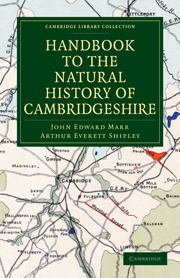Book contents
- Frontmatter
- PREFACE
- Contents
- ADDENDA AND CORRIGENDA
- PHYSIOGRAPHY
- GEOLOGY
- VERTEBRATE PALÆONTOLOGY
- ZOOLOGY
- Mammals
- Birds
- Reptiles and Amphibians
- Fishes
- Mollusca
- Insects: Introduction
- Insects: Orthoptera
- Insects: Neuroptera
- Insects: Hemiptera
- Insects: Coleoptera
- Insects: Lepidoptera
- Insects: Diptera
- Insects: Hymenoptera
- Myriapoda
- Arachnida
- Crustacea
- FLORA
- PREHISTORIC ARCHÆOLOGY
- Appendix to the Article on the Mollusca
- INDEX
- Plate section
Crustacea
Published online by Cambridge University Press: 10 November 2010
- Frontmatter
- PREFACE
- Contents
- ADDENDA AND CORRIGENDA
- PHYSIOGRAPHY
- GEOLOGY
- VERTEBRATE PALÆONTOLOGY
- ZOOLOGY
- Mammals
- Birds
- Reptiles and Amphibians
- Fishes
- Mollusca
- Insects: Introduction
- Insects: Orthoptera
- Insects: Neuroptera
- Insects: Hemiptera
- Insects: Coleoptera
- Insects: Lepidoptera
- Insects: Diptera
- Insects: Hymenoptera
- Myriapoda
- Arachnida
- Crustacea
- FLORA
- PREHISTORIC ARCHÆOLOGY
- Appendix to the Article on the Mollusca
- INDEX
- Plate section
Summary
In a survey of the Crustacea of Cambridge and its neighbourhood, we have at the outset our task greatly lightened by the inland situation of the town.
The great majority of the members of the group are inhabitants of the sea, a certain proportion inhabit fresh water, and a minority are adapted for a life upon land. It follows then that, of the immense number and variety of forms which together constitute the group, we have but comparatively few to take into consideration. The common crab or lobster, typical representatives of the class, are of course marine, and we are left with forms the majority of which are quite small, often almost microscopic.
While there is no reason to suppose that the terrestrial Crustacea are strikingly different from those common in other parts of our island, the fresh-water types from Cambridge, surrounded as it is by the old fen country, might well be numerous and interesting. Unfortunately we have here to face a great lack of information. It is indeed remarkable that a district containing a great University should have been so little exploited, at least in this direction, but the fact remains. Almost the only work of reference is a manuscript “Catalogue of the Insect Fauna of Cambridgeshire” by the Rev. Leonard Jenyns (afterwards Blomefield), which he presented to the Cambridge University Museum in 1868.
- Type
- Chapter
- Information
- Handbook to the Natural History of Cambridgeshire , pp. 204 - 208Publisher: Cambridge University PressPrint publication year: 2010First published in: 1904

